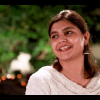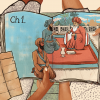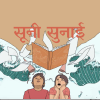In this elaborate lecture-demonstration, performer and guru Shama Krishna explains different aspects of angika abhinaya in Kuchipudi, as prescribed in Bharata Muni's Natyashastra. She demonstrates the adavus or body movements that are a combination of movements of limbs and torso, and the position of the body.
Following is an edited transcript of the lecture.
Namaskar.
I am Shama Krishna, a Bharatanatyam and Kuchipudi performer. I am here to share with the viewers of Sahapedia a few ideas and concepts about the angika aspect in Kuchipudi in reference to Natyashastra.
I would like to say that these ideas and concepts are completely my views about them, according to my understanding of these ideas. And if there is anything to be improved, any mistakes are done, kindly excuse me.
I would like to pay my respects to all my gurus from whom I have acquired this little bit of knowledge that I have and I am very happy to share it with all of you.
To understand the connection between Kuchipudi and Natyashastra through angika abhinaya, we first need to understand what angika abhinaya is according to the Natyashastra.
Bharata Muni in Natyashastra divides our entire body into angas and upangas—the main organs and the subsidiary organs.
Then he lists the different types of movements of these angas and upangas which we call the bhedas. These bhedas are not just for the practice of the body but they are also applied to abhinaya (expression).
After having listed these bhedas, he gives us the sthanakas, the different body postures which are maintained during a performance.
And then he adds to it the charis and the nritta hastas. The charis are the leg movements, and the nritta hastas are the hand movements. And then putting them all together, he gives us the 108 karanas.
These karanas are what we believe to have transformed into today's adavus. But a very important point to note is the adavus of today are used mainly as an embellishment in dance as in there is no rasa abhinaya in the execution of the adavus whereas in Natyashastra the nritta (pure dance) is very much a part of the abhinaya. It is also used as an embellishment to the presentation but very much used as a part of the abhinaya.
Now let us come to what is the difference between the angas and the upangas.
The angas are the main organs such as our shira or head, pura or chest, parsva or the sides, kati or waist, the hasta or the hands. Hands mean the entire arm. And then our feet or the pada.
And then we have the upangas—skandha or the shoulder, bahu or the arms. Then we have udara or stomach, uru or thigh, jangha or the shanks, the gulfa or ankles. We have the toes or charananguli. Then we have the tala or the sole of the foot and the pashni or the heel of the foot. All these are the upangas of the sharira (body).
We also have bhedas for the upangas of the face which we call the mukhaj upangas. Like we have the eyebrows, eyelids and eyeballs. We have the cheek, the nose, lips and the chin. We also have movements for the ears called karnabheda.
When we do the practice of all these bhedas, it becomes very simple to execute abhinaya because he (Bharata Muni) has very clearly listed which bheda is to be used while expressing which emotion.
A demonstration of various bodily gestures follows.













